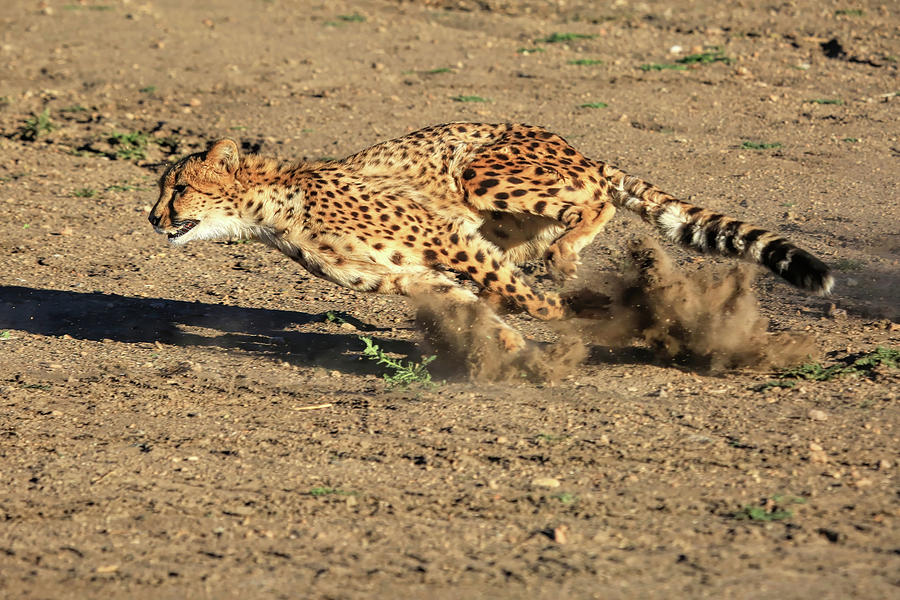
The Chase

by Donna Kennedy
Title
The Chase
Artist
Donna Kennedy
Medium
Photograph - Photographs
Description
Original Fine Art Photography by Donna Kennedy..
Cheetah running free at Animal Ark Wildlife Sanctuary in Reno, Nevada
The fastest land animal in the world, the cheetah (Acinonyx jubatus) is a marvel of evolution. The Cheetah's slender, long-legged body is built for speed. Cheetahs are tan in color with black spots all over their bodies. They can also be distinguished from other big cats by their smaller size, spotted coats, small heads and ears and distinctive "tear stripes" that stretch from the corner of the eye to the side of the nose.
Did You Know?
When cheetahs are running, they use their tails to help them steer and turn in the direction they want to go, like the rudder of a boat.
In 1900, there were over 100,000 cheetahs across their historic range. Today, an estimated 9,000 to 12,000 cheetahs remain in the wild in Africa. In Iran, there are around 200 cheetahs living in small isolated populations.
Range
Historically cheetahs were found throughout Africa and Asia from South Africa to India. They are now confined to parts of eastern, central and southwestern Africa and a small portion of Iran.
Behavior
Found mostly in open and partially open savannah, cheetahs rely on tall grasses for camouflage when hunting. They are diurnal (more active in the day) animals and hunt mostly during the late morning or early evening. Only half of the chases, which last from 20 - 60 seconds, are successful.
Did You Know?
Unlike other big cats, cheetahs cannot roar. However, they can purr on both inhale and exhale, like domestic cats!
Cheetahs knock their prey to the ground and kill with a suffocating bite to the neck. They must eat quickly before they lose the kills to other bigger or more aggressive carnivores.
Cheetahs are also typically solitary animals. While males sometimes live with a small group of brothers from the same litter, females generally raise cubs by themselves for about a year.
Cubs are smoky in color with long, woolly hair called a mantle running down their backs. This mantle is thought to camouflage cubs in grass, concealing them from predators. Mothers move cubs to new hiding places every few days. At 5 - 6 weeks, cubs follow the mother and begin eating from their kills. 0522
Conservation status: Vulnerable (Population decreasing)
Thank You to the Administrators that Featured this photo in the following Groups:
-Photography the Fine Art
-The Artistic Photographer
-Art by God
-Beauty
-Wildlife One A Day
-Canon Full Frame Cameras
-Reno
-500-1000 Photo
-500 Views
-ABC Group-K For Kinetic Movement
-100 Favorite
Uploaded
October 14th, 2014
Statistics
Viewed 3,293 Times - Last Visitor from Cambridge, MA on 04/25/2024 at 4:46 PM
Embed
Share
Sales Sheet







































